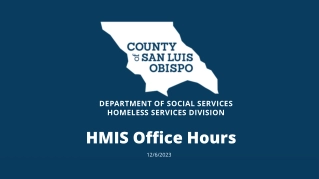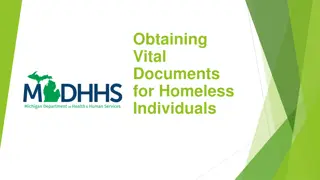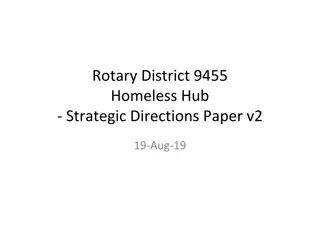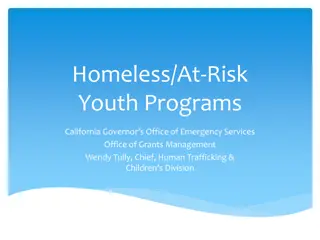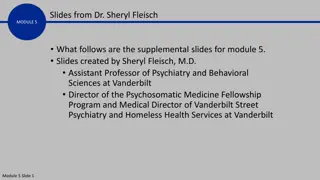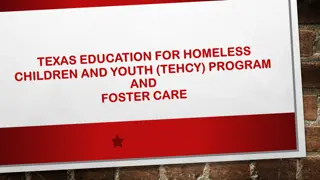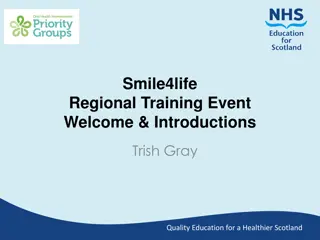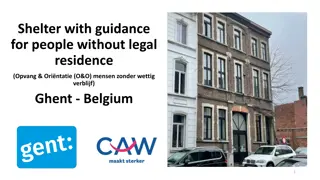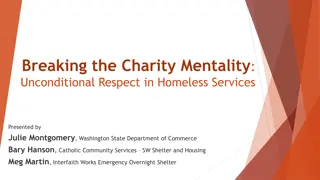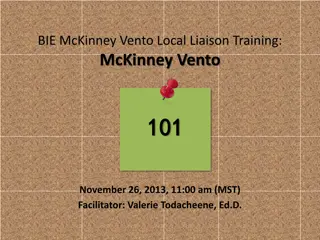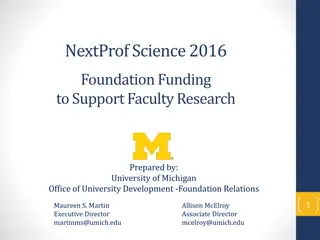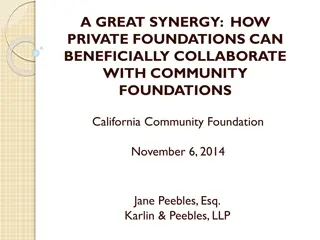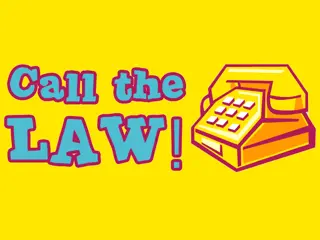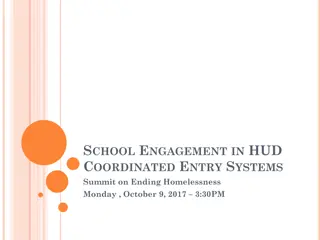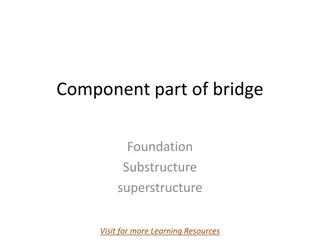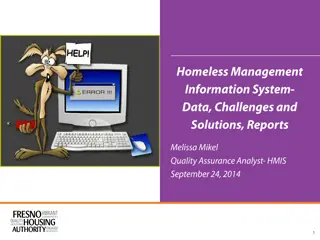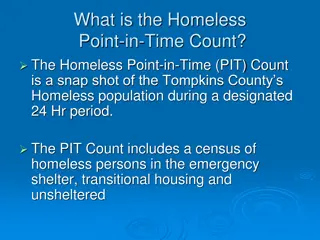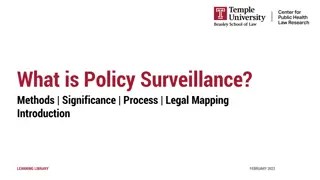Legal and Policy Foundations of VA's Homeless Programs
This presentation discusses the legal and policy foundations of the VA's homeless programs, covering historical perspectives, early national policies, major legislations, and the impact of research on homeless programs. Presenters Roger Casey, PhD, LCSW, and Paul Smits, LCSW, provide insights into the development and implementation of homeless programs for veterans, highlighting key aspects such as housing first and low-demand/harm reduction initiatives.
Download Presentation

Please find below an Image/Link to download the presentation.
The content on the website is provided AS IS for your information and personal use only. It may not be sold, licensed, or shared on other websites without obtaining consent from the author.If you encounter any issues during the download, it is possible that the publisher has removed the file from their server.
You are allowed to download the files provided on this website for personal or commercial use, subject to the condition that they are used lawfully. All files are the property of their respective owners.
The content on the website is provided AS IS for your information and personal use only. It may not be sold, licensed, or shared on other websites without obtaining consent from the author.
E N D
Presentation Transcript
The Legal and Policy Foundations of VA s Homeless Programs Roger Casey, PhD, LCSW Director, Education and Dissemination National Center on Homelessness among Veterans Paul Smits, LCSW Senior Policy Analyst 1
Presenters Roger Casey, PhD, LCSW,is the Director, Education and Dissemination of VA s National Center on Homelessness among Veterans. Dr. Casey holds a Doctoral Degree in Public Health and Master s Degree in Social Work. He has worked with VA homeless programs since 1986, providing direct services, implementing national pilot programs, and developing research initiatives regarding practice-informed residential treatment, housing, and case management design models. Paul Smits, MSW, is currently the Senior Policy Analyst for the VA National Center on Homelessness among Veterans based at the University of South Florida. In his role for the National Center, he is currently guiding model development activities of several homeless programs. His area of expertise includes development and implementation of low demand/harm reduction programs that include Safe Haven Programs, Housing First, Low Demand Homeless Domiciliary and Grant and Per Diem Programs. 2
Overview The History and Foundation of America s Homeless Programs Early National Policy Addressing the Poor and Homeless in America Early Legislation for Veterans Experiencing Poverty and Homelessness Major Legislation for Homeless in America Homeless Legislation for Veterans in the Modern Era Homeless Research and Evaluation and Its Impact on VA Homeless Programs 3
The History and Foundation of America s Homeless Programs Elizabethan Poor Law and the Shaping of Public Policy Regarding the Poor and Homeless (1601) Queen Elizabeth I The Poorhouse, Poor Farm, and Workhouse Movement in Europe 4
Elizabethan Poor Law of 1601 The 'Deserving Poor' - the old the young and the sick who should receive help These poor people were provided with 'Outdoor Relief' in the form of clothes, food or money The 'Deserving Unemployed' - those willing and able to work but unable to find employment These poor people were provided with 'Indoor Relief' in the form of being cared for in almshouses, orphanages and workhouses The 'Undeserving Poor' - those who engaged in begging or refused gainful employment -These poor peoplewere often incarcerated or received other very harsh punishments 5
Basic Provisions of the Poor Law Each parish appointed Overseers of the Poor Each parish authorized to levy a poor tax to support the poor, homeless and disabled Most anyone deemed capable of working was sent to the workhouses Very elderly, very young, and very disabled could receive outdoor relief that included food, clothes and assistance with shelter Begging was forbidden and criminalized 6
Early National Policy Addressing the Poor and Homeless in America Early Programs Outdoor Relief Auctioning off the poor/indentured servitude Contracting for care of the paupers The County Poor Farm/Poor House System Striving for more efficient systems of managing the poor Small institutions that could reform the poor and cure them of character defects and bad habits The Post Civil War Care of the Poor Reform Movement New programs for disabled Veterans Mentally ill and children removed from the homes 7
Early National Policy Addressing the Poor and Homeless in America Frederick County Poor Farm, Virginia 8
Care of the Poor Policy Reform The Depression, New Deal, and the Housing Acts of 1934 and 1937 The Federal Government take a larger role -The Federal Housing Administration and US Housing Authority Provided local power to condemn slums Provided Federally backed home loans and funding for large scale public housing projects 9
HUD, Expansion of Public Housing, and Housing Subsidy Programs 1965 -Department of Housing and Urban Development (HUD) created as a cabinet level agency (A Great Society Initiative) 1968 Fair Housing Act outlaws housing discrimination 1974 Housing and community Development Act -Block grants to local communities -Section 8 Tenant based rental assistance 1987 The Stuart B. McKinney Homeless Assistance Act -HUD is given a new mandate to expand its mission from a focus on low income working poor to helping local communities deal with homelessness 10
The National Home Legislation The Shaping of Public Policy on Homeless Veterans in America The US must have a home for its national defenders. The poor soldier broken in health should not return to be the common charity; he should have a nation s gratitude a place in the nation s household, a seat by the nation s fireside. President Lincoln signed into law on March 3, 1865 11
Groundbreaking Legislation Until the Soldier s Home legislation, the care of sick and disabled Veterans was often the responsibility of States, local government, or charitable organizations Initiated the framework for a comprehensive system for the care of our nation s Veterans, especially the disabled and homeless 12
Major Legislation for Homeless in America PL 100-77 (1987): McKinney-Vento Homeless Assistance Act PL 100-6 (1987): Community-based psychiatric residential treatment for chronically mentally ill Veterans (HCMI -HCHV) PL 101-144 (1990): VA and HUD Independent Agencies Appropriations Act (HUD VASH - pilot) PL 102-405 (1992): Veterans Medical Programs Amendments Act (CHALENG) PL 102-590 (1992): Homeless Veterans Comprehensive Serves Programs Act (GPD) PL Law 107-95 (2001): Homeless Veterans Comprehensive Assistance Act (Justice, HVRP, GPD, DCHV) PL 110-387 (2008): Veterans Mental Health and other Care Improvements Act (SSVF, Homeless Prevention Services) 15
Overview of Legislation, Funding, and Implementation Appropriation vs Authorization Implementation VACO Review Regulations Legal review Public Publication 16
Major Legislation for Homeless in America PL 100-77 (1987) McKinney-Vento Homeless Assistance Act of 1987 (Reagan) Federal funding for homeless program Policy shift local to federal Continuum of Care approach supportive housing, shelter care plus, SRO program, emergency shelter grant. Defined homeless Lack of nighttime residence; or residence that is temporary; or in a place not ordinary used for sleeping. Established USICH US Interagency Council on the Homeless 17
Homeless Legislation for Veterans in the Modern Era PL 100-6 (1987) Community-based psychiatric residential treatment for chronically mentally ill Veterans Established Community-based psychiatric residential treatment for chronically mentally ill Veterans Homeless Chronically Mentally Ill (HCMI) (HCMI -HCHV) Initiation overall intent Outreach Contract Residential Treatment Used in 2009 for Safe Havens, CRRCs 18
Homeless Legislation for Veterans in the Modern Era PL 101-144 (1990) VA and HUD Independent Agencies Appropriations Act Collection of authorizations Appropriations Construction Disaster Of Significance Supportive housing Collaboration with HUD Pilot to HUD - reference to funding 19
Federal Partners HUD HUD-VASH (PL 100-77) Other, non-Veteran-specific programs: Emergency Shelter Grants Program Shelter Plus Care DOL Homeless Veterans Reintegration Program (PL 107-95) Incarcerated Veterans Transition Program 20
Community Homelessness Assessment, Local Education and Networking Groups (CHALENG) PL 102-405 (1992) Veterans Medical Programs Amendments Directed the Secretary to assess all programs developed by [VA] facilities . . . to assist homeless Veterans. Goal: replication of successful programs throughout VA Became CHALENG process: Estimate homeless populations and services Develop plans for local communities 21
Homeless Providers Grant and Per Diem (GPD) Program PL 102-590 (1992) Homeless Veterans Comprehensive Service Programs Act of 1992) Comprehensive Homeless Centers Placement of VBA Representatives VA Authority to make Grants for creating transitional housing Per diem to defray operating expenses Non Profits/community experts Determined award criteria Significance of grants as funding mechanism 22
Veterans Justice Programs PL Law 107-95 (2001) Homeless Veterans Comprehensive Assistance Act of 2001 National goal Homeless Veterans Reintegration Program (DOL) VBA Representatives at Regional Offices and outreach Coordinated outreach MH and Vet Centers Counseling and referral for Veterans in institutions requires VA outreach to Veterans reentering community from institutional settings, including incarceration Re authorized GPD and included specifications (recovery, life safety, special needs, TA) women, frail elderly, terminally ill, chronically mentally ill Supportive Housing: CWT DCHV HUD Vouchers Advisory Committee on Homeless Veterans: planning, consultation 2007: Health Care for Reentry Veterans program 2009: Veterans Justice Outreach program 23
Homeless Legislation for Veterans in the Modern Era PL 110-387 (2008) Veterans Mental Health and other Care Improvements Act Substance use and mental health Expansion/extension of Justice program DCHV Permanent status Supportive services for Veterans and their Families (SSVF) Prevention significant Supportive services outreach and case management 24
Review Post-McKinney legislation authorizing services for homeless Veterans Foundation: authority to conduct outreach and provide residential treatment directly and via contract (HCHV, DCHV) Subsequent authorities allowed VA s focus to expand: needs assessment (CHALENG), transitional housing (GPD, incl. for special populations), permanent housing (HUD-VASH) Most recent expansions: preventing homelessness (SSVF), including outreach to justice-involved Veterans 25
Homeless Research and Evaluation: Impact on VA Homeless Programs Early studies Causes Individuals Risk Poverty and populations Homelessness and Veterans Approaches and services 26
Homeless Research - Impact on VA Homeless Programs Homelessness: Early Studies Searching for Causes Unaffiliated persons living in extreme poverty with high levels of physical and mental disability (Rossi, Wright, Fisher, & Willis, 1987). Rates of both substance use and schizophrenia were elevated among individuals who had been homeless many times or for long periods of time (Koegel et al., 1988). One-third of the homeless had a current psychiatric disorder; higher prevalence rates in DIS/DSM III diagnostic categories; homeless men were found to have higher rates of hospitalization for mental health problems (Fischer, Shapiro, Breakey, Anthony, & Kramer, 1986). Other studies during the late 1980s: High rates of co-morbidity among the homeless population as well as the need for mental health and substance use services (Breakey et al., 1989). Characterized by a substantially higher prevalence of other psychiatric disorders in addition to substance use disorders, particularly the major mental illnesses (Koegel & Burnam, 1988). 27
Homeless Research - Impact on VA Homeless Programs Homelessness: Early Studies - Risk Mental illness (Koegel, Burnam, & Farr, 1988), (Breakey et al., 1989), (Isaac, 1990) (Pollio, North, Thompson, Paquin, & Spitznagel, 1997), (Phelan & Link, 1999), (Sullivan, Burnam, & Koegel, 2000). Substance use (Calsyn & Morse, 1991), (S. G. Wenzel, T., 1993), (Johnson, Freels, Parsons, & Vangeest, 1997) (Vangeest & Johnson, 2002). Dually diagnosed (Blankertz, 1990), (Fischer & Breakey, 1991), (S. L. Wenzel, Ebener, Koegel, & Gelberg, 1996). 28
Homeless Research - Impact on VA Homeless Programs Homelessness: Early Studies Risk (cont d) Service in the military (Blum, 1984), (Rosenheck, Frisman, & Chung, 1994). Poor health (Rosenheck, Gallup, & Frisman, 1993), childhood abuse (Susser, 1987), (Koegel, Melamid, & Burnam, 1995). Environmental characteristics rather than individual traits: The limited availability of low-cost housing, increased poverty, increasingly weaker social ties (Schutt, 1992), (Dolbeare, 1996). Environmentally exclusive determinants: increased community violence, local vagrancy laws, and reduction of community-based social services (Foscarinis, 1991) (Haugland, Siegel, Hopper, & Alexander, 1997). 29
Homeless Research - Impact on VA Homeless Programs Homelessness: Early Studies - Poverty Rise of homelessness since the 1980s - from 1970 through 1990 (Interagency Council on the Homeless Annual Report, 1994) Increase of poverty with a decrease in income support programs; decrease in the number of low-cost housing units; deinstitutionalization of those diagnosed with a mental illness; increase in health care costs; need for increased job training; changes in vagrancy laws Contributing Factors to Homelessness (National Alliance for the Homeless, 2000) Number of low-income families increased by 40 percent from 5.9 million to 8.5 million. Affordable declined by over 50 percent leaving half of all low-income families without a permanent housing option During the 1970s and 1980s, the country lost affordable housing and the number of those needing low cost housing increased, contributing to a gap of 5 million affordable housing units (Dolbeare, 1996). 30
Homeless Research - Impact on VA Homeless Programs Homelessness: Early Studies - Populations Of those homeless individuals seeking services nationally (Homelessness: Programs and the people they serve - National survey of homeless assistance providers and clients, 1999) 80 percent were between the ages of 25 and 54 years old; 68 percent were male, while 32 percent were female; 41 percent were white, non-Hispanic; 40 percent were black, non-Hispanic; 11 percent were Hispanic; and 9 percent were other. 48 percent of the homeless individuals were never married; 24 percent were divorced; and 15 percent were separated, 9 percent were married; The proportion of those that graduated from high school was 34 percent; 28 percent reported higher educational attainment; Slightly over half did not have any paid employment within 30 days prior to being interviewed; Only 40 percent received any type of government benefits, however, that figure was higher for those reporting as part of a family system (52 percent); Approximately 60 percent stayed in shelters, however, 20 percent literally lived on the streets. 31
Homeless Research - Impact on VA Homeless Programs Homelessness and Veterans Improvement in psychiatric symptoms was associated with superior housing outcomes and improvement in community adjustment (Leda & Rosenheck, 1992). No differences were found between homeless Veterans and non- homeless Veterans in terms of residential instability, current social functioning, physical health, mental illness, or substance abuse (Rosenheck & Koegel, 1993) Overall proportion of Veterans among homeless men was 41 percent, somewhat higher than the percentage of Veterans in the general population (34 percent) (Rosenheck et al., 1994) Significant difference between homeless Veterans and homeless non-Veterans was that those Veterans between the ages of 20 to 34 were 4.76 times more likely to be homeless than those that were non-Veterans in the same age group (Rosenheck et al., 1994). 32
Homeless Research - Impact on VA Homeless Programs Homelessness and Veterans (cont d) Homeless Veterans individual vulnerability to homeless is most likely due to a multiplicity of psychiatric and non-psychiatric factors (Rosenheck & Fontana, 1994). Impact of homeless Veterans on medical care can be highlighted by a 1997 survey that found 12 percent of all inpatients had been homeless at admission or had lost their housing while in the hospital (Leda-Seibyl, et al. 1997). 33 percent of homeless adult men were Veterans and approximately 31 percent of non-homeless adult men are Veterans (Homelessness: Programs and the people they serve. National survey of homeless assistance providers and clients, 1999). Of all Veterans, homeless Veterans have an increased mortality risk, particularly those that are older (Kasprow & Rosenheck, 2000). Age group at highest risk in earlier studies (age 20 to 34) are still the same cohort at highest risk, although now older (Gamache, Rosenheck, & Tessler, 2001). 33
Homeless Research - Impact on VA Homeless Programs Approaches The Stewart B. McKinney Homeless Assistance Act , 1987 created a range of services including emergency shelter, transitional housing, job training, primary health care, and education. This law inspired other federal, state, and local funding initiatives in an attempt to create programs to fill gaps in service needs through establishing local Continuums of Care utilizing transitional housing as a primary component. HUD s transitional housing programs may be successful in terms of reaching the intended target population, discharging residents to community independent housing, and increasing participants income upon discharge - the long-term benefits were not studied. (Homelessness: Transitional Housing Shows Initial Success but Long-term Effects Unknown., 1991). Transitional housing programs determined effective in linking homeless populations to independent living - no association was found between psychiatric diagnosis and goal attainment (R. L. Murray & Baier, 1995). Other services determined effective: Vocational and housing assistance (Grella, 1993), therapeutic milieu (R. B. Murray & Baier, 1993), comprehensive rehabilitative treatment (Prabucki, Wootton, McCormick, & Washam, 1995), and case management (Conrad et al., 1998) basic interventions - similar to transitional housing such as those that stress stable housing, include provision of food and clothing, address physical health problems, and train individuals to minimize their risk of victimization would most likely improve the quality of life of homeless persons with a mental illness (Sullivan, Burnam, Koegel et al., 2000). 34
Homeless Research - Impact on VA Homeless Programs Approaches (cont d) Homeless individuals, diagnosed with a mental illness, placed directly into permanent housing with supports, housing retention was remarkably high after six months. (Tsemberis, Moran, Shinn, Asmussen, & Shern, 2003). Follow up study - equally positive results of housing retention for those diagnosed with a mental illness and homeless (Tsemberis & Eisenberg, 2000), . Other, earlier studies found positive results of supportive housing programs: Supportive housing found to produce better outcomes than just case management alone (Rosenheck, Kasprow, Frisman, & Liu-Mares, 2003) and, When associated with case management, effectiveness demonstrated (Kasprow, Rosenheck, Frisman, & DiLella, 2000). No significant differences in outcomes between those who had received prior residential treatment and those placed directly in supportive housing (Mares, Kasprow, & Rosenheck, 2004). 35
Homeless Research - Impact on VA Homeless Programs Approaches (cont d) Prevention Effective (stop from becoming homeless) and Efficient (target those at risk); (Burt et al., 2007) National Alliance to End Homelessness (reduction of 1%; 2009 and 2011) US Conference of Mayors (2013) Risk model selecting those at higher risk can reduce homeless risk (Shinn, M. et al., 2013) Challenges Empirical model Case management judgement Ongoing studies 36
Homeless Research - Impact on VA Homeless Programs Policy Direction and Services Who, why, how (to address services) Emergency and transitional housing Health and mental health services Supportive permanent housing with services Prevention and emergency services 37
Homeless Research - Impact on VA Homeless Programs Program Evaluation s Role in Shaping Policy, Form X s, HOMES, and NEPEC CHALLENG and the PIT Count Moving towards reducing homelessness among Veteran populations The National Center Research Model Development Implementation Housing first/low demand/HPACT/CRRCs 38
Summary: Evolution of VA Homeless Programs Early approach: use outreach to identify homeless Veterans, and connect them with appropriate resources for housing, clinical, and other unmet needs ( rescue ) Current approach: increased focus on preventing Veterans from becoming homeless by identifying those at risk and offering responsive services to help maintain housing stability Increased emphasis on VA/community partnerships for service delivery 39
Summary Questions? 40


